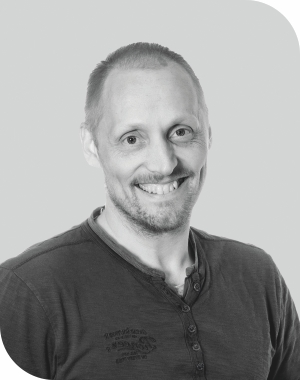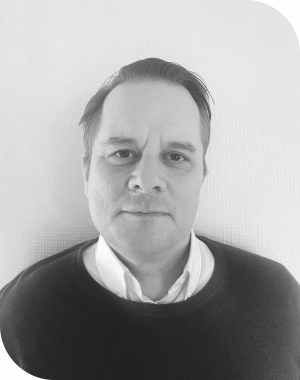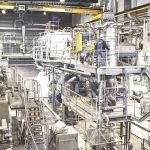Climate change is one of the biggest challenges we face, and we can already see its effect on people and the environment. In this context, it is important to highlight the many promising initiatives and the willingness to make a difference.


Energy crises, water scarcity and the rising cost of raw materials – these topics are being discussed daily among tissue producers around the world. Are we prepared for what is coming? Are we being sufficiently innovative to meet tomorrow’s challenges? Are we moving fast enough to slow down climate change? And how can my business stay profitable in these circumstances? When these questions arise, it’s important to remember that there are many ways to contribute. Working together and sharing experiences and expertise give us a great starting point for change.
Valmet has worked with these topics for years, collaborating with customers and experts in the field, and we are now seeing significant results in the reduction of our environmental footprint. In this article, we share experts’ and producers’ voices to discover what is on the tissue industry’s horizon.
Improving Tissue Machine Dewatering to Increase Energy Efficiency
All the producers that are up to date on the research front will certainly benefit from the continuous development of new strategies for efficiency in tissue production. Currently, some of the most critical aspects are achieving lower emissions and energy use, with lower raw material consumption. “I believe emissions will be significantly lower if we can develop more efficient dewatering strategies together and thereby decrease the need for excessive heat and pump capacity,” says Björn Sjöstrand, Senior Lecturer at Karlstad University.
Further understanding of dewatering is important for meeting increased demand for quality and sustainability.
One of the incentives for an ongoing research co-production project at Karlstad University, Sweden, is energy efficiency in tissue production. Valmet is heavily involved in the project, which aims to acquire deeper knowledge of tissue vacuum and model vacuum dewatering during tissue production, both with a conventional tissue manufacturing method and with Through Air Drying. It will contribute to the efforts to implement a circular forest-based bioeconomy by increasing the fundamental understanding of the dewatering of tissue materials, and it involves several studies on the laboratory and pilot scale, as well as modeling work.
Sjöstrand believes improved knowledge of tissue dewatering mechanisms, forming and material transportation during and after dewatering can increase process efficiency. “Valmet and the other sponsors will potentially be able to develop new products based on the knowledge of novel machine and clothing designs acquired during the project. Further understanding of dewatering will be important for all of us who have identified increasing demand for quality and sustainability in our work. And by investing in both knowledge and state-of-the-art machinery, tissue producers can reduce their costs and their energy use and emissions at the same time.”
Building Industrial Symbiosis
The RISE Research Institutes in Sweden have seen increased global awareness among tissue producers of the need for a sustainable strategy. While reducing CO2 emissions in production is one aspect, their perspectives need to be broadened to the system level. Richard Fornell, Senior Scientist at RISE, explains: “We believe that new technology solutions, with an approach to connect and collaborate locally with industries, agriculture and municipalities to convert different residual streams into valuable resources, will be one of the key factors in reducing the carbon footprint in the future.”
Integrating solutions with other sectors will be relevant when we take the next step toward lower emissions.
For example, taking a systems perspective on the use of resources and how to be more efficient through industrial symbiosis is something on which companies are increasingly focusing. “The EU, governments, regions and municipalities, and various industrial sectors are increasingly looking at this broader perspective. One reason for this trend is increasing water scarcity and the disruptions to the global markets and the European energy system. Building resilience by developing more local or regional markets and dependence is a way to address these trends,” Fornell continues.
RISE also acknowledges that fiber as a raw material is and will continue to be the most important cost item for tissue producers. The competition for forest-based material from other industries as they try to align with the UN’s Sustainable Development Goals and the European Green Deal has increased the demand for tissue manufacturers to find alternatives. Mattias Drotz, Business Development at RISE, says: “While wood prices are higher, and shortages due to competing recovery paper collection rates are slowing down, we think non-wood fiber sources will be increasingly interesting.”
Watch: JMC Paper Tech Launches New Subsidiary JMC Papers
Drotz and Fornell agree that to reduce emissions, we need to evolve how to generate heat and electricity and examine alternative heat sources for a green transition. Steps toward this are already on the market. “Drying is a big energy consumer in tissue production, and the total reduction in energy consumption for a tissue machine is steadily decreasing, but at a lower rate. We believe new drying technologies using less water in the process (for foam forming and other applications) and integrating solutions with other sectors will be relevant when we take the next step toward lower emissions.”
Working with the industry is important. “We are currently collaborating with Valmet in the area of the Clean Energy Transition to develop prediction tools and find integrated solutions between other sectors for the development of industrial and urban symbiosis. We are also working together in the ongoing RP2021 Research Program at RISE for better product performance and process efficiency in tissue manufacturing,” Drotz continues.
Tissue Producers’ Voice on the Future
What are tissue producers’ thoughts on their current business and their challenges, and how do they view the future? How can we use these insights to find new ways and areas to improve and focus on efficiency? How can we enable cross-border thinking and end-to-end value creation through digitalization and support a sustainable industry future? This is what we wanted to find out in a global market study conducted by Tietoevry with Fisher International, I-Plan and Valmet. Fifty tissue producers globally participated in the survey.
Profitability and sustainability were at the top of the list when we asked about important development and improvement areas. With rising material costs and increasing inflation, the outlook for the industry is uncertain in many ways, and business fundamentals are being reviewed. One of the biggest concerns is related to the cost and availability of raw materials. Many respondents stated that digitalization would have the biggest effect on production, and 85 percent chose production when they were asked about the areas to which they were going to apply new technologies.
Also Read: A Special Menu for Giant Pandas– ANDRITZ Renews Collaboration with Schönbrunn Zoo
In the next two years, nearly 70 percent of respondents plan to invest in producing green energy onsite with solar panels or wind turbines, for example. Two thirds of respondents are investing in equipment that helps reduce carbon emissions. More than half the respondents aim to reduce their use of plastic and are changing their fuels to fossil-free options.
This study also underlines that the tissue industry is at a turning point, and many investments, evaluations and testing are required to find ways to keep businesses profitable, sustainable and efficient in the future. At Valmet, we are confident that our technology solutions and wide expertise can play an important role, and we are eager to support our customers on their journey.
Further understanding of dewatering is important for meeting increased demand for quality and sustainability.



